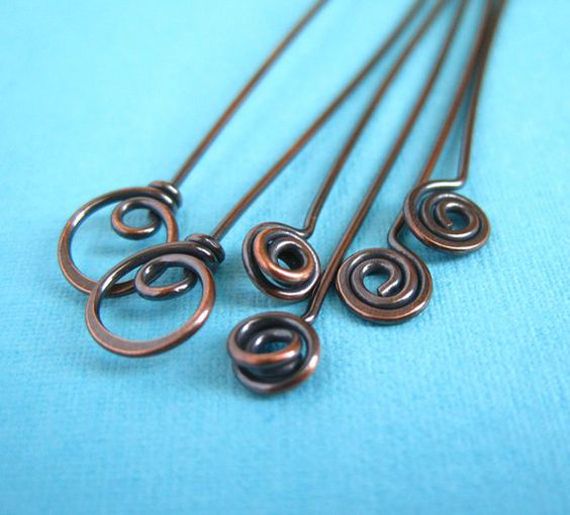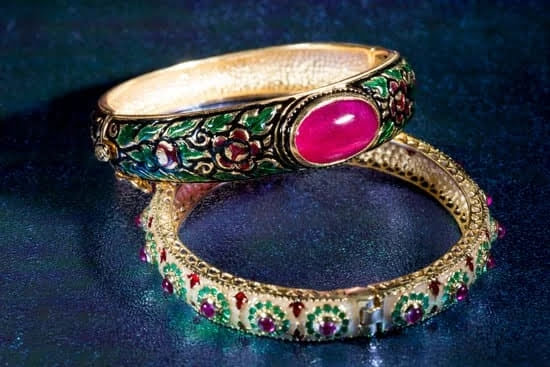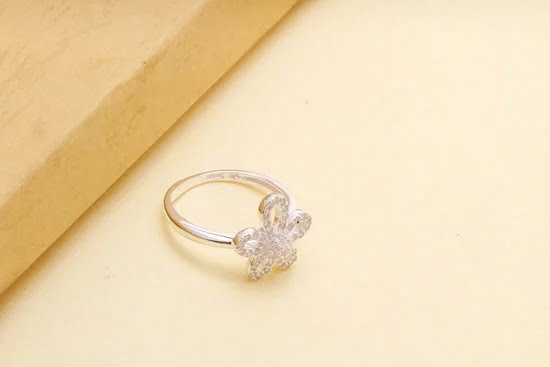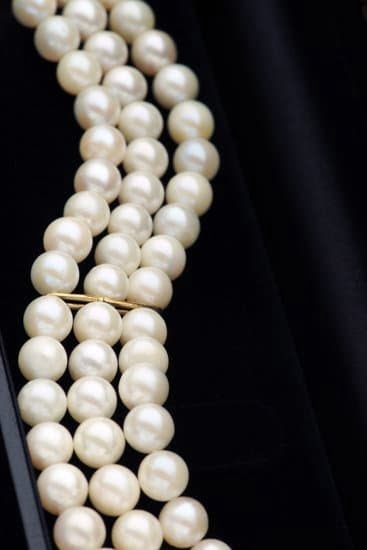Antique jewelry beads hold a unique charm and value that attracts collectors and enthusiasts alike. Understanding the origins, materials, and characteristics of these beads can provide valuable insights into their age, quality, and craftsmanship. This article will delve into the world of antique jewelry beads, offering a comprehensive guide on how to identify them and appreciate their historical significance.
The history of antique jewelry beads is rich and diverse, with origins tracing back to ancient civilizations. By exploring the historical context of these beads, we can gain a deeper appreciation for their cultural significance and the artistry behind their creation. Additionally, learning about the different types of materials used in antique jewelry beads, from glass to gemstones, can shed light on their craftsmanship and inherent value.
Identifying antique jewelry beads requires a keen eye for detail and an understanding of the tools and techniques used in the process. By familiarizing oneself with magnification methods, testing techniques, and available resources, individuals can confidently assess the authenticity and age of these beads. However, it’s important to be wary of common mistakes when identifying antique jewelry beads to avoid falling into pitfalls that could compromise their accurate evaluation.
History of Antique Jewelry Beads
Antique jewelry beads have a rich and fascinating history that dates back centuries. The significance of these beads lies in the craftsmanship, materials used, and the cultures that created them. By understanding the history of antique jewelry beads, collectors and enthusiasts can gain a deeper appreciation for their value and significance.
The origins of antique jewelry beads can be traced back to ancient civilizations such as Egypt, Mesopotamia, and Rome. These cultures utilized various materials such as glass, gemstones, metals, and even organic materials like ivory and bone to create intricate beads for jewelry making.
The significance of these beads is not only in their aesthetic appeal but also in their cultural and religious symbolism. For example, certain types of beads were used for trade or as symbols of wealth and status within a society.
Types of Antique Jewelry Beads: Materials Used Throughout History
- Glass: Glass beads have been used for millennia and come in a wide range of colors, shapes, and sizes.
- Gemstones: Precious and semi-precious gemstones such as jade, turquoise, lapis lazuli, and amethyst were often used to create luxurious antique jewelry beads.
- Metals: Metals like gold, silver, bronze, and copper were fashioned into beads through various techniques such as casting, hammering, or filigree work.
- Organic Materials: Antique jewelry beads made from materials like coral, pearls, ivory, bone, and amber are highly prized for their rarity and unique beauty.
Understanding the materials used in antique jewelry beads is essential for identifying their age and origin. Each material reflects the craftsmanship of its time period and provides valuable insight into the cultural context in which the bead was created.
By delving into the history of antique jewelry beads and familiarizing oneself with the various types of materials used throughout history will provide valuable knowledge on how to identify antique jewelry beads accurately.
Types of Materials Used in Antique Jewelry Beads
Antique jewelry beads can be made from a wide variety of materials, each with its own unique characteristics and significance. Some of the most common materials used in antique jewelry beads include glass, metal, wood, bone, and gemstones such as pearls, diamonds, rubies, and emeralds. By understanding the different types of materials used in antique jewelry beads, collectors and enthusiasts can gain valuable insight into the origins and history of each piece.
Glass beads were one of the earliest types of beads used in jewelry making. They have been found in archaeological sites dating back thousands of years and are prized for their vibrant colors and versatility. Metal beads, on the other hand, often feature intricate designs and patterns that reflect the craftsmanship of different cultures and time periods. Gemstone beads are highly valued for their beauty and rarity, with each type of gemstone carrying its own unique symbolism and cultural significance.
When identifying antique jewelry beads, it is important to consider the specific material used in each piece. Understanding the properties and characteristics of different materials can help determine the age, origin, and quality of antique jewelry beads. For example, glass beads may have air bubbles or imperfections that indicate they were handmade, while gemstone beads may show signs of wear or aging that add to their character and charm.
| Material | Characteristics |
|---|---|
| Glass | Vibrant colors, often handmade with imperfections |
| Metal | Intricate designs reflecting craftsmanship of different cultures |
| Gemstones | Highly valued for beauty and rarity; each type carries unique symbolism |
Characteristics of Antique Jewelry Beads
Antique jewelry beads hold a special allure due to their historical significance and exquisite craftsmanship. To truly appreciate the value of antique jewelry beads, it is important to be able to identify their age, quality, and craftsmanship. This involves understanding the various characteristics that can provide clues about the origins of these beads and the techniques used in their creation.
Materials Used
One way to identify the age of antique jewelry beads is by examining the materials used in their construction. Different time periods favored certain materials over others, so familiarizing oneself with the most commonly used materials for specific eras can be invaluable when determining the age of a piece. For example, ancient beads were often made from natural materials such as bone, shell, or stone, while Victorian-era beads may have been crafted from glass or precious gemstones.
Color and Patina
The color and patina of antique jewelry beads can also offer important insights into their age and quality. Over time, certain materials develop distinct patinas that result from natural wear and aging processes. By closely examining the coloring and patina of antique beads, experts can often make educated guesses about their age and authenticity.
Craftsmanship
The level of craftsmanship exhibited in antique jewelry beads can be indicative of their age and quality. Older beads may display intricate designs and meticulous handiwork that reflect the traditional techniques employed during different historical periods. Understanding the various styles and methods of bead-making throughout history can aid in distinguishing authentic antique pieces from modern reproductions.
Tools and Techniques for Identifying Antique Jewelry Beads
When it comes to identifying antique jewelry beads, having the right tools and techniques is essential. By using magnification, testing methods, and resources, collectors and enthusiasts can gain a better understanding of the age, quality, and craftsmanship of these beautiful pieces.
Magnification
One of the most important tools for identifying antique jewelry beads is a jeweler’s loupe or a magnifying glass. This allows you to examine the beads up close and look for any distinguishing marks or characteristics that can help determine their age and origin. A magnification of at least 10x is recommended to get a clear view of the details on the beads.
Testing Methods
In addition to magnification, there are various testing methods that can be used to identify antique jewelry beads. For example, conducting a scratch test with a sharp object can determine if the bead is made of glass or a harder material like gemstones. Using a black light can also help in identifying certain materials such as uranium glass beads which glow under ultraviolet light.
Resources
For those who are passionate about antique jewelry beads, there are numerous resources available for further education and assistance in identification. This includes books, online forums and communities, museums with bead collections, as well as professional appraisers and experts in the field. Networking with other collectors and attending trade shows or exhibitions can also provide valuable insight into the world of antique jewelry beads.
By utilizing magnification, testing methods, and available resources, enthusiasts can gain valuable knowledge that will help them accurately identify antique jewelry beads. These tools and techniques are crucial in preserving the history and beauty of these timeless pieces for future generations to appreciate.
Common Mistakes When Identifying Antique Jewelry Beads
When trying to identify antique jewelry beads, it is important to be aware of common mistakes that collectors and enthusiasts may make. One of the most common pitfalls is assuming that all old-looking beads are automatically antique. This is not always the case, as there are many modern reproductions and vintage items that can closely resemble actual antique beads. It is essential to thoroughly research and verify the authenticity of any beads before deeming them as truly antique.
Another mistake to avoid when identifying antique jewelry beads is overlooking the significance of markings and signatures. Some antique beads may have small marks or engravings that can provide valuable information about their origins and age. These marks could be from the maker, the time period, or the location where the beads were created. Paying attention to these details can greatly aid in accurately identifying antique jewelry beads.
Additionally, a common error in identifying antique jewelry beads is neglecting to consult experts or reputable sources for guidance. With the abundance of information available online and in books, it can be tempting to rely solely on personal research. However, seeking out professional advice from experienced appraisers, jewelers, or historians can offer valuable insights and ensure a more accurate identification process.
It’s important to remember that identifying antique jewelry beads requires careful examination and attention to detail. By avoiding these common mistakes, collectors and enthusiasts can improve their ability to accurately recognize authentic antique beads from replicas or vintage pieces.
| Common Mistakes | Pitfalls |
|---|---|
| Assuming all old-looking beads are automatically antique | Not verifying authenticity before deeming them as truly antique |
| Overlooking markings and signatures on the beads | Neglecting expertise or guidance from professionals |
Conclusion
In conclusion, understanding the value and significance of antique jewelry beads goes beyond just the monetary worth. By tracing their origins and appreciating the craftsmanship that went into creating them, we can gain a deeper appreciation for these timeless pieces. The history of antique jewelry beads is rich and diverse, with each type of material used telling its own story. From glass to gemstones, the variety of materials used in antique jewelry beads adds to their allure and mystique.
When it comes to identifying antique jewelry beads, it is important to pay attention to their characteristics such as age, quality, and craftsmanship. Using tools like magnification and testing methods can help in determining the authenticity of these beads. Additionally, being aware of common mistakes when identifying antique jewelry beads can prevent collectors from falling into potential pitfalls.
By preserving and appreciating the beauty of antique jewelry beads, we are not only honoring their history but also ensuring that future generations can continue to enjoy them. Learning how to identify antique jewelry beads allows us to become custodians of these beautiful pieces and helps in maintaining their cultural significance for years to come. Whether as a collector or enthusiast, it is important to continue valuing these treasures for their historical and artistic merit.
Frequently Asked Questions
How Do I Know What Kind of Beads I Have?
To identify the kind of beads you have, start by examining their material, shape, color, and size. You can also try to determine if they are handcrafted or mass-produced. Researching online or consulting with a bead expert can also help you identify your beads.
How Do You Identify Antique Trade Beads?
Identifying antique trade beads requires some research and knowledge of historical bead production. Look for specific characteristics such as age, material, origin, and design. Consulting with experts or collectors can provide valuable insights into identifying antique trade beads.
What Are the Names of Vintage Beads?
Vintage beads come in various types and styles, each with its own unique name. Some common vintage bead names include Venetian glass beads, Czech lampwork beads, Murano glass beads, seed beads, and French jet black glass beads. Researching different vintage bead styles can help you identify specific names associated with them.

Welcome to my jewelry blog! My name is Sarah and I am the owner of this blog.
I love making jewelry and sharing my creations with others.
So whether you’re someone who loves wearing jewelry yourself or simply enjoys learning about it, be sure to check out my blog for insightful posts on everything related to this exciting topic!





